Challenge 3: Leveraging Artificial Intelligence and Machine Learning for Water and Sanitation Infrastructure Project Pricing

Keywords and Thematic Areas
AI/ML; SDGs; Climate Change; Public infrastructure; Investment Inefficiency; Value-for-Money; Procurement; Water; Sanitation; Anti-Corruption.
Challenge Context
Background
Global water demand is expected to rise by 30% by 2050, owing to population growth and skyrocketing agricultural needs. This implies further strain on already limited water resources, particularly in rural areas where agriculture is the primary source of income. Moreover, water scarcity in urban areas is expected to quadruple globally by 2050, from 930 million in 2016 to 1.7–2.4 billion people (UNESCO, 2023). In light of these, the United Nations through SDG 6 emphasizes universal access to water, improving water quality, water-use efficiency, integrated water resources management, investment and capacity building, as well as community participation. This call to action is underscored by the recognition that climate change, population growth, and urbanization are exacerbating water scarcity and sanitation challenges especially in the Global South (UN, 2023).
Notwithstanding these, access to clean water and sanitation remains a pressing issue in many African countries. An estimated 411 million people in Africa lack access to safe drinking water, 700 million lack basic sanitation services and almost three-fourths do not benefit from safely managed sanitation services (WHO, UNICEF, 2020; Afro barometer, 2023; UNDP, 2023). This situation is particularly dire in rural areas, where access rates are significantly lower than in urban centers. Despite governments’ commitment to the United Nations Sustainable Development Goals (SDGs) and the African Union’s Agenda 2063, most countries are lagging behind. Water and sanitation ranks fourth among the most important problems that Africans want their government to address. The urgency of ensuring water security is heightened by the effects of climate change, including prolonged droughts that threaten agriculture as well as household water supplies (Mumssen, 2022; Malpass & Sall, 2022). Addressing these challenges requires innovative pricing strategies, increased investment, and a commitment to equitable access that considers the needs of the most vulnerable populations. Without significant reforms and increased funding, the gap in access to clean water and sanitation will continue to widen, exacerbating health risks and hindering economic development across the region. However, every extra investment made in such public infrastructure, opens up fresh avenues for opportunism and corruption.
Consequently, how can investments in public water and sanitation infrastructure be increased without attracting such undesirable factors?
Understanding the Problem
South Africa is, and always has been, a water scarce country. As a result, it has progressively had to develop new resources and increasingly more complex and integrated bulk water supply systems to meet the growing demand. This is further complicated by the significant spatial dislocation between sources of supply and sources of demand (SA-TIED, 2023). Furthermore, the poor condition of water and wastewater treatment facilities is a major concern. The Blue and Green Drop reports indicate a decline in overall service quality and infrastructure condition between 2013 and 2022, with 34% of the country’s water supply systems (DWS, 2022a) and 54% of its wastewater systems (DWS, 2022b) in high or critical danger. The current trajectory is thus contradictory to achieving the National Development Plan (NDP) and SDGs, and urgent action is necessary. Continued population increase, climate change, and environmental degradation are projected to have a substantial influence on water resource quality and availability in the future, thereby compromising South Africa’s ability to reach NDP and SDG objectives.
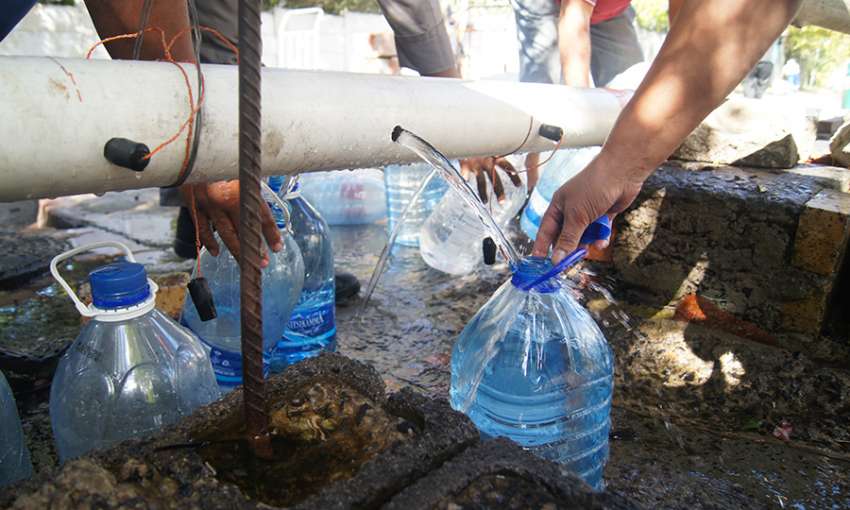
Cape Town water crisis. (Source: https://pulitzercenter.org/, 2018)
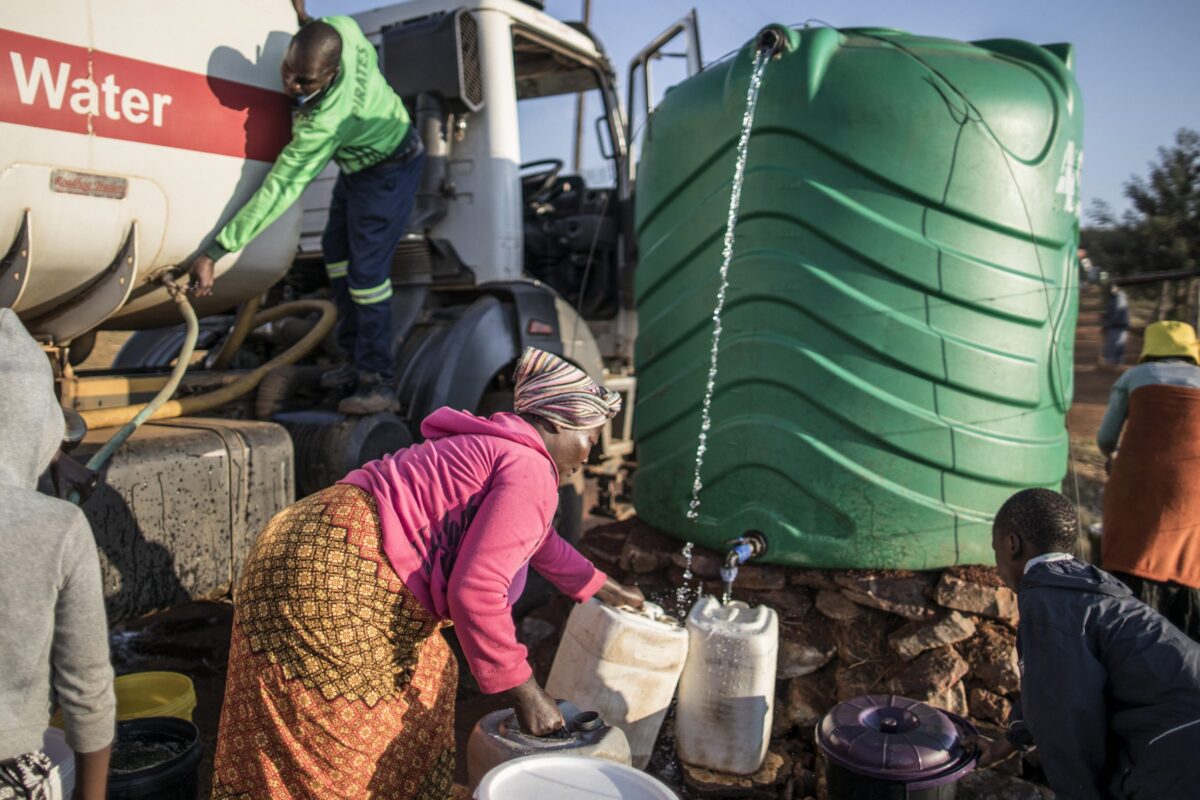
Gauteng water crisis. (Source: Malukeke, 2024)
Defining the Problem
In South Africa, average water use is high, with municipal/domestic water use per capita of 2376 litres per person per day compared to a world average of 173 litres per person per day (DWS, 2018). A significant driver of this is high levels of municipal Non-Revenue Water (NRW) in the form of physical leaks, billing errors, and unauthorized consumption, currently estimated at around 41% compared to a global average of 37% (McKenzie, Siqalaba and Wegelin, 2012). This represents a significant loss of potential revenue for municipalities and by extension, the constant need for more investments in bridging the gaps in water and sanitation service delivery. Sadly, like in many countries, infrastructure projects are one of the biggest budget items in South Africa which inevitably attract undesirable factors such as corruption. The challenge of inappropriate infrastructure pricing is encountered by all governments and infrastructure end users, who are directly or indirectly taxed to finance these projects.
The primary problem therefore stems from inadequate transparency and accountability in water and sanitation infrastructure investments. Funds are often misallocated, equipment are misused or mismanaged, and services fail to reach the people who need them most. Corruption is rampant, with contract manipulation, bribery, and kickbacks being common occurrences, making it difficult for infrastructure projects to succeed.
In spite of numerous interventions and reforms, corruption remains a pervasive issue in the water and sanitation sector. Many projects remain incomplete, while the infrastructure that is completed often deteriorates quickly due to poor quality materials or inadequate maintenance. The lack of real-time monitoring and transparency in procurement processes means that corruption can go undetected for long periods, leading to significant losses.
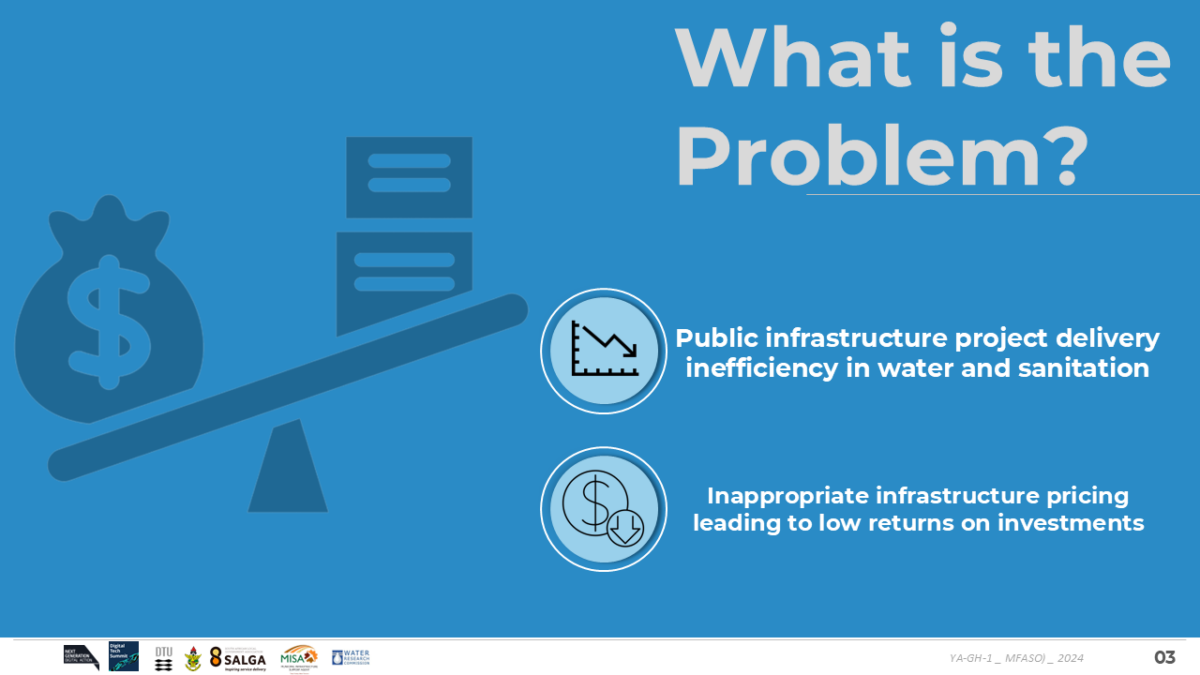
Unmasking the Challenge
Our Methodology
In order to provide adequate solution to the problem, the team needed to understand the keywords and running themes. ‘Value for money’ was identified as the core of the challenge which needs to be prioritized. A deep dive was done to identify the root causes of the problem, study what has been done and find which gaps needed to be addressed, as indicated below. Consequently, the team settled on an approach geared towards infrastructure asset management with a focus on infrastructure planning, delivery and operations and maintenance.
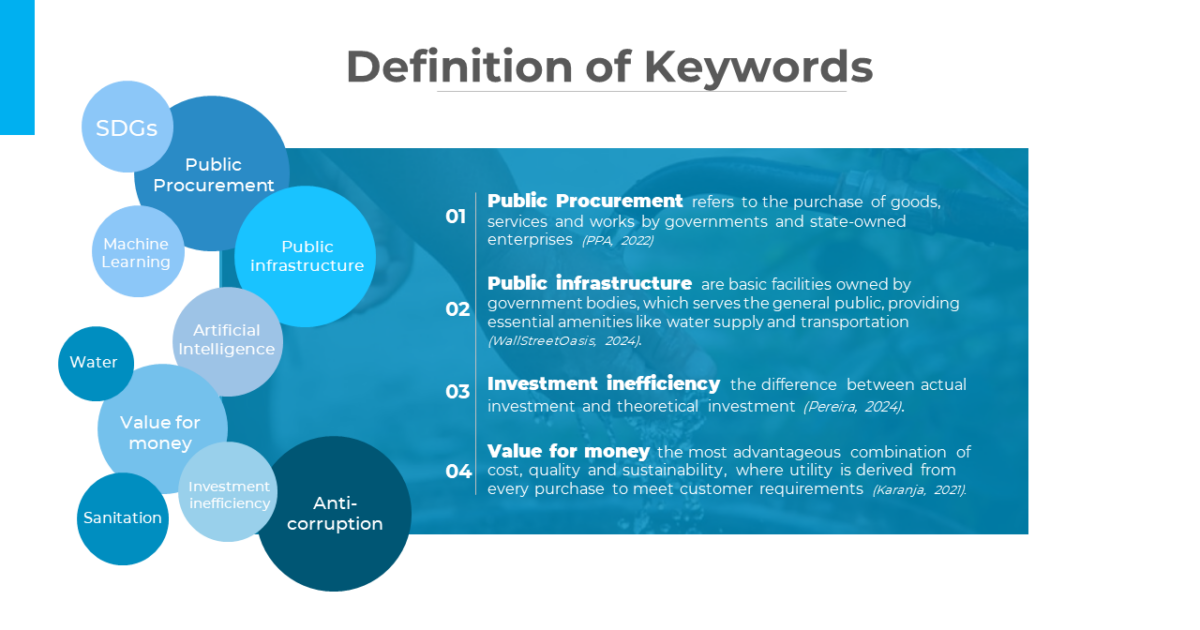

The key approach is to build a system that can enforce transparency and accountability at every step of the procurement and delivery process. This requires real-time tracking of equipment, secure and immutable records of transactions, and predictive analytics to ensure resources are allocated efficiently. The complexity of the water and sanitation sector, combined with resistance to change, makes this a formidable task.
What has been done?
Various governmental and non-governmental organizations have attempted to address the problem through increased oversight, stricter regulations, and the implementation of anti-corruption initiatives. Technology-driven solutions have been proposed, but implementation has been slow and fragmented. Some of these initiatives include:
- Municipal Water: This website provides access to important financial information about their municipalities. By promoting transparency and encouraging civic engagement, the platform aims to foster informed discussions about local governance and the effective use of public funds.
- H2O Securities: South Africa has implemented blockchain in water project financing to improve transparency and attract foreign investment. Through automated smart contracts, the need for lengthy board decisions is eliminated, making the procurement process faster and more transparent.
- Seosan Smart Water Management: In South Korea, blockchain is used alongside public funding to manage water scarcity efficiently. By combining blockchain with existing infrastructure, the country has successfully optimized water management and fostered citizen cooperation.
- Botanical Water Exchange: Japan has utilized blockchain in collaboration with private companies to refine and reuse water resources. Blockchain ensures secure tracking of water usage and permits, helping to manage water resources more effectively.
Role of Emerging Digital Technologies
Emerging technologies such as blockchain, IoT, and AI offer powerful tools to tackle corruption and inefficiencies in the following ways:
- Improving Transparency and Accountability: Blockchain can provide a decentralized, transparent ledger that records every transaction, making it impossible to alter records without detection. IoT devices can track equipment and monitor water quality in real-time, while AI and machine learning can predict equipment failures, optimize resource allocation, and detect anomalies that may indicate corrupt practices.
- Enhancing Efficiency and Reducing Costs: Smart sensors and meters can detect leaks and monitor water usage in real-time, allowing for faster response times and reduced non-revenue water losses. AI algorithms can optimize cleaning and maintenance schedules based on risk assessments, replacing costly reactive repairs. Again, predictive analytics can forecast demand and infrastructure needs, enabling more strategic long-term planning.
- Enhancing Community Engagement: Mobile and web-based platforms allow citizens to report issues and access information on service quality. Combining sensor data with community feedback provides a more complete picture to guide investments, while improved transparency and responsiveness can increase trust and willingness to pay for services.
Our Proposal
In addressing this challenge, our proposal is threefold. We seek to tackle this task from an infrastructure asset management point of view where we consider infrastructure planning, delivery as well as operations and maintenance. Our project will emphasize a solution for the infrastructure planning stage, and recommend the way forward for the two subsequent stages which can be implemented in the long term.
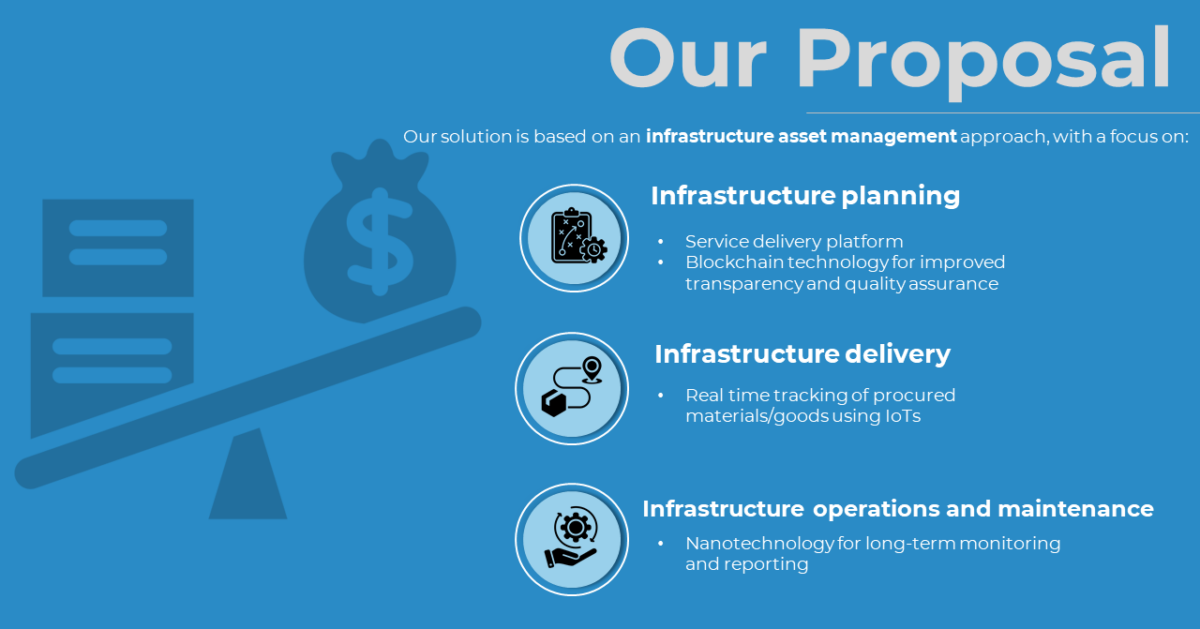
For the initial part of the solution, which deals with the planning stage, our website, Spaar, which translates to save/savings in Afrikaans addresses the challenges in water and sanitation procurement by integrating emerging technologies such as blockchain, IoT devices, AI/ML, on a comprehensive dashboard. These technologies work together to enhance transparency, optimize resource allocation, and ensure real-time monitoring of infrastructure, ultimately improving service delivery to communities.
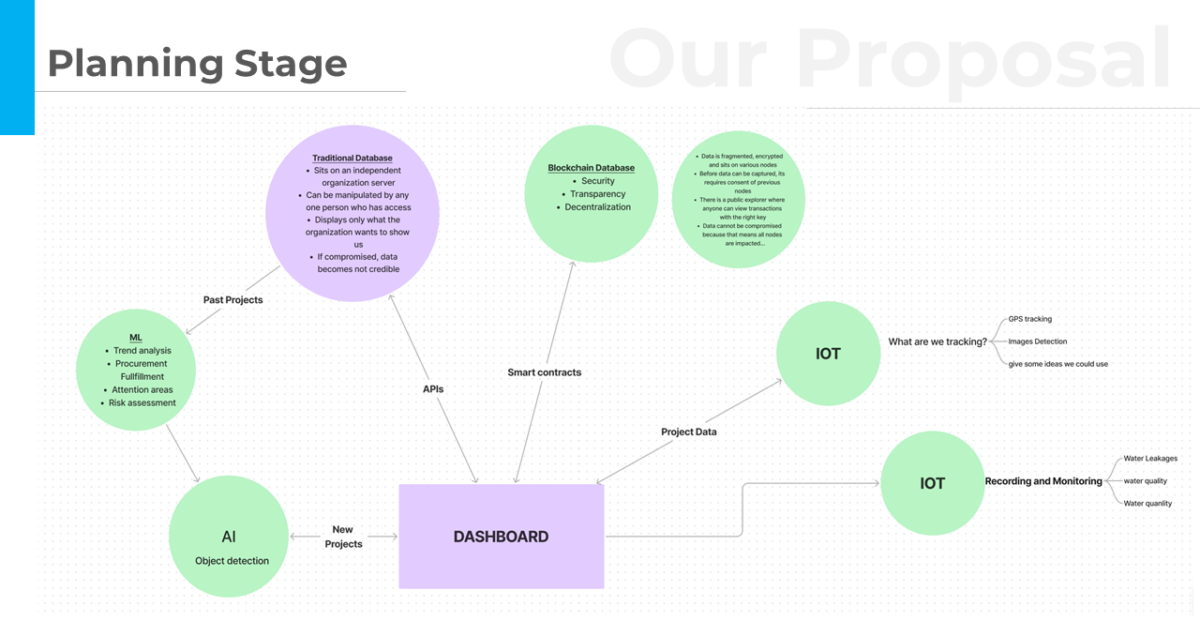

How it works
- Blockchain for Secure and Transparent Procurement: Blockchain technology creates an immutable, decentralized ledger that records all procurement transactions. Smart contracts automate agreements, ensuring that payments are only made when predefined conditions are met. Every transaction is traceable and visible to authorized stakeholders, reducing the risk of corruption and ensuring accountability. The blockchain’s decentralized nature ensures that no single entity can manipulate the data, making the entire procurement process transparent and secure. By utilizing blockchain, our solution ensures that every step of the procurement process—from bidding to contract award to delivery—is securely recorded. This transparency fosters trust among stakeholders and reduces opportunities for fraudulent activities. Additionally, the immutable nature of blockchain makes it possible to conduct audits easily and effectively, enhancing overall accountability in procurement.
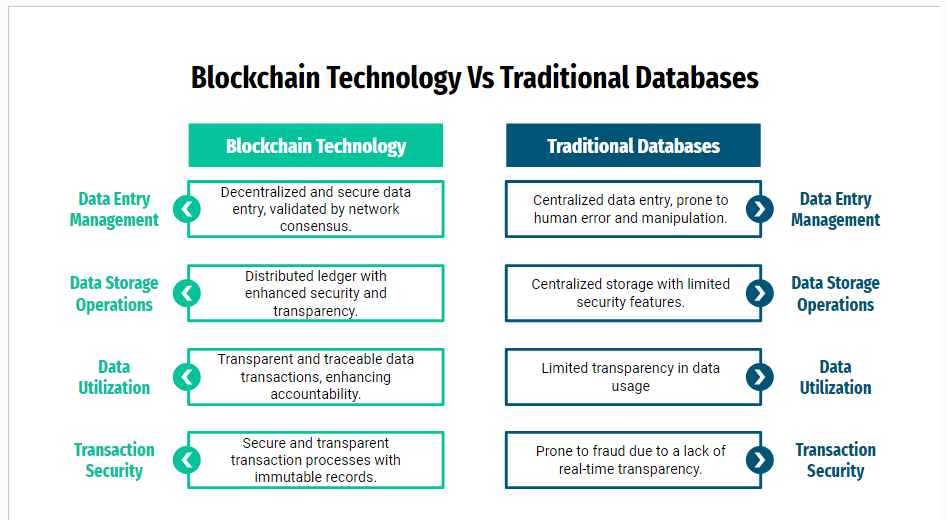
- IoT Devices for Real-Time Monitoring and Tracking: IoT devices are deployed to monitor the location, condition, and operational status of equipment in real-time. These devices provide continuous data feeds, allowing stakeholders to track the movement of resources from procurement to final installation. The data collected by IoT sensors includes GPS coordinates, equipment condition metrics, and performance indicators, which are critical for ensuring that infrastructure is delivered as planned and operates efficiently once installed. Real-time monitoring with IoT devices ensures that equipment reaches its intended destination without delay or diversion. It also provides immediate insights into the operational status of infrastructure, helping to detect issues before they become critical. By continuously tracking equipment and monitoring its performance, IoT devices enable proactive maintenance and reduce the likelihood of equipment failure, thereby improving the overall efficiency and effectiveness of the infrastructure.
- AI and Machine Learning for Predictive Analytics and Anomaly Detection: AI and machine learning algorithms analyze the vast amounts of data generated by IoT devices and blockchain records. These algorithms identify patterns and trends, allowing for predictive maintenance scheduling. For example, AI can predict when equipment is likely to fail based on historical performance data, enabling preemptive maintenance. Additionally, machine learning models detect anomalies in procurement transactions and equipment performance that may indicate inefficiencies or potential corruption. The predictive capabilities of AI and ML reduce downtime and maintenance costs by addressing equipment issues before they lead to failures. This results in more efficient operations and longer equipment lifespans. Furthermore, AI’s anomaly detection capabilities help identify irregularities that could indicate corruption or mismanagement, ensuring that resources are used efficiently and appropriately. By providing actionable insights based on data, AI and ML improve decision-making and optimize infrastructure performance.
- Centralized Dashboard for Real-Time Monitoring and Decision Support: The dashboard serves as a centralized interface that integrates data from blockchain, IoT devices, and AI systems. It provides stakeholders with real-time visibility into procurement transactions, equipment performance, and overall infrastructure health. The dashboard features customizable views, allowing users to drill down into specific data points, generate reports, and monitor key performance indicators (KPIs). Alerts and notifications are also integrated to ensure that stakeholders are informed of any critical issues as soon as they arise. This enhances decision-making by providing stakeholders with a holistic view of the entire system in real-time. It enables quick responses to issues, ensures that projects stay on track, and improves accountability by making data accessible and transparent. The dashboard also facilitates collaboration among stakeholders by providing a shared platform for monitoring and managing infrastructure, ultimately leading to better coordination and more successful project outcomes.
Features of the Dashboard:
- Local Income Sources: Displays key revenue streams (e.g., service charges, rental income) with real-time updates and percentage changes.
- Progress Report Per Year: Graph tracks the progress of different services (e.g., sanitation, water) throughout the year.
- Total Revenue: A bar chart comparing revenue sources like government funding and external contributions.
- Customer Satisfaction: Visualizes customer feedback on projects over time.
- Now vs Future Estimation: Compares current financials against future projections for strategic planning.
- Top Products: Highlights the most procured items such as pipes and water treatment chemicals.
- Sales Mapping: Geographic visualization of sales or resource allocation.
- Water Distributed vs Service Level: A bar chart comparing the volume of water distributed against the service level achieved.
- Leaderboard: Ranks regions or departments based on performance metrics.
- IoT Readings: Real-time monitoring of equipment, water quality, and infrastructure health from IoT devices.
- User Feedback: Aggregated feedback from the community, showing areas of satisfaction or concern.
- Progress Report: Tracks ongoing projects, monitoring milestones and overall progress.
Project Impact
Stakeholder Benefits
- The State: The solution also aids in policy enforcement and real-time monitoring of water and sanitation services, helping the government maintain service quality and allocate funds effectively.
- Municipalities: Our solution helps municipalities manage infrastructure more effectively, reduce inefficiencies, prevent resource mismanagement, streamline procurement processes, optimize maintenance, and improve service delivery, which directly impacts the quality of life for their residents.
- Suppliers: There will be improved transparency in payments for supplies, boosting supplier confidence and reducing financial uncertainties.
- Contractors: Smart contracts automate much of the process, making procurement faster and more efficient. This leads to better resource management as well as faster project execution and increased business opportunities.
- Consumers: The consumers are the end-users of our solution. By improving service delivery and transparency, consumers gain trust in local governance and enjoy a higher quality of life with better health outcomes. Communities are also involved in decision-making processes where they can give feedback on project progress and hold local authorities accountable for any delays or mismanagement.
Our Proposal and the Sustainable Development Goals (SDGs)
Our solution aligns with several Sustainable Development Goals (SDGs) by creating a more transparent, efficient, and resilient water and sanitation infrastructure system.
- SDG 6: Clean Water and Sanitation
- Blockchain ensures transparency in procurement and project funding, reducing corruption and ensuring that resources are allocated effectively. IoT devices continuously monitor water quality and infrastructure, ensuring that communities have consistent access to clean water and reliable sanitation services. AI-driven predictive maintenance minimizes downtime, ensuring that water systems remain operational.
- SDG 9: Industry, Innovation, and Infrastructure
- By integrating cutting-edge technologies like blockchain, IoT, and AI, our solution promotes innovation in infrastructure management. These technologies create a more resilient infrastructure by automating processes, improving decision-making, and enabling real-time monitoring and data-driven maintenance strategies. This not only enhances the longevity of infrastructure but also reduces costs.
- SDG 13: Climate Action
- Optimizing resource use through AI reduces energy consumption and minimizes greenhouse gas emissions. IoT devices allow for efficient water management, reducing wastage and promoting sustainable resource use. Additionally, blockchain’s immutable ledger helps track and verify climate-related data, ensuring that environmental goals are being met and that infrastructure projects align with climate action initiatives.
- SDG 16: Peace, Justice, and Strong Institutions
- Blockchain technology enhances transparency and accountability by creating an immutable record of transactions. This reduces corruption in procurement processes and ensures that funds are used appropriately. The decentralized nature of blockchain builds trust among stakeholders, fostering stronger institutions and governance. The ability to audit all transactions in real-time further strengthens the fight against fraud and mismanagement.
- SDG 11: Sustainable Cities and Communities
- By improving water and sanitation infrastructure, our solution contributes to building sustainable and resilient cities. Real-time monitoring and predictive maintenance ensure that urban infrastructure can withstand environmental pressures, reducing the risk of service disruptions. This supports the development of sustainable communities with access to essential services.
- SDG 12: Responsible Consumption and Production
- IoT devices and AI-driven analytics allow for the efficient use of resources, reducing waste in water and sanitation projects. Blockchain ensures that procurement processes are transparent, minimizing unnecessary expenditure and promoting responsible consumption. These technologies also enable data-driven decision-making, ensuring that resources are allocated based on actual need and usage patterns, reducing overconsumption.
Our Proposal and Circularity
- Resource Efficiency: Our solution ensures optimal use of water and sanitation resources, minimizing waste. Predictive analytics allow for proactive maintenance and repairs, extending the lifespan of infrastructure and reducing the need for resource-intensive replacements. This aligns with the circular economy’s focus on maintaining resources in use for as long as possible.
- Waste Reduction: Blockchain technology ensures transparency in procurement, reducing corruption and ensuring that resources are allocated efficiently. This minimizes waste in the form of misused funds or poorly executed projects, leading to better resource management. Efficient resource use and reduced wastage are key tenets of the circular economy.
- Recycling and Recovery: Our solution promotes the use of IoT sensors to monitor water quality and manage wastewater treatment, encouraging the recovery and recycling of water. This helps to close the loop in the water cycle, turning what would have otherwise been waste into a valuable resource, a core principle of the circular economy.
- Sustainable Infrastructure: The integration of smart technologies in infrastructure management ensures that materials are used more sustainably. By improving the efficiency and durability of water and sanitation systems, the need for new resources is reduced, contributing to a more circular approach to infrastructure development.
Our Roadmap
Our project will be undertaken in the following steps:
- Initial Research and Pilot Testing: Identify key areas and implement pilot projects to test blockchain, IoT, and AI solutions.
- Integration of Technologies: Deploy blockchain for procurement transparency, IoT for real-time monitoring, and AI for predictive maintenance across the sector.
- Stakeholder Engagement: Work with municipalities, regulators, and communities to ensure successful adoption and scaling of technology solutions.
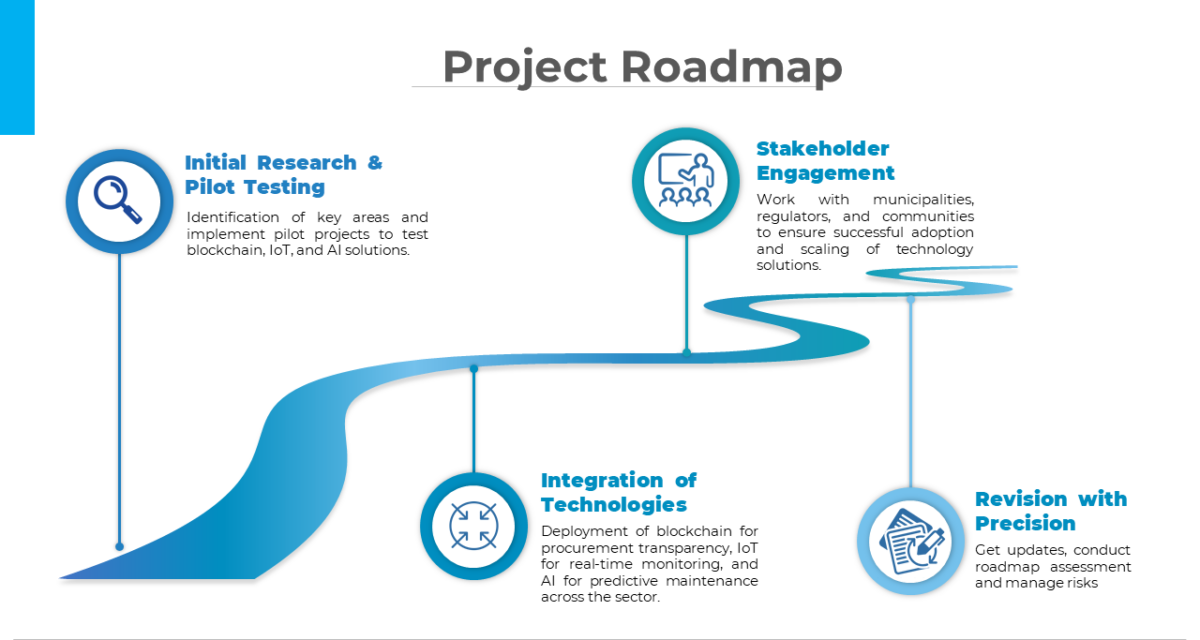
Project Phasing
Phase 1 (Infrastructure Planning): In the first phase, there will be an assessment of current and future infrastructure needs based on population growth, economic trends, and policy goals; identification of gaps and deficiencies in existing infrastructure systems; and prioritizing infrastructure projects based on factors like cost, impact, and urgency. The solutions to be implemented here are:
- Service delivery website
- Blockchain technology for improved transparency and quality assurance
Phase 2 (Infrastructure delivery): This will deal with the design, construction and implementation stage of water and sanitation infrastructure projects. Our primary solution is the real time tracking of procured materials/ goods using IoTs.
Phase 3 (Infrastructure operations and maintenance): The operations and maintenance phase is post implementation, where there is a need for regular checks and routing maintenance of installations. IoT tracking will be recommended to reduce the amount of energy needed for deployment of men and machines to the field.
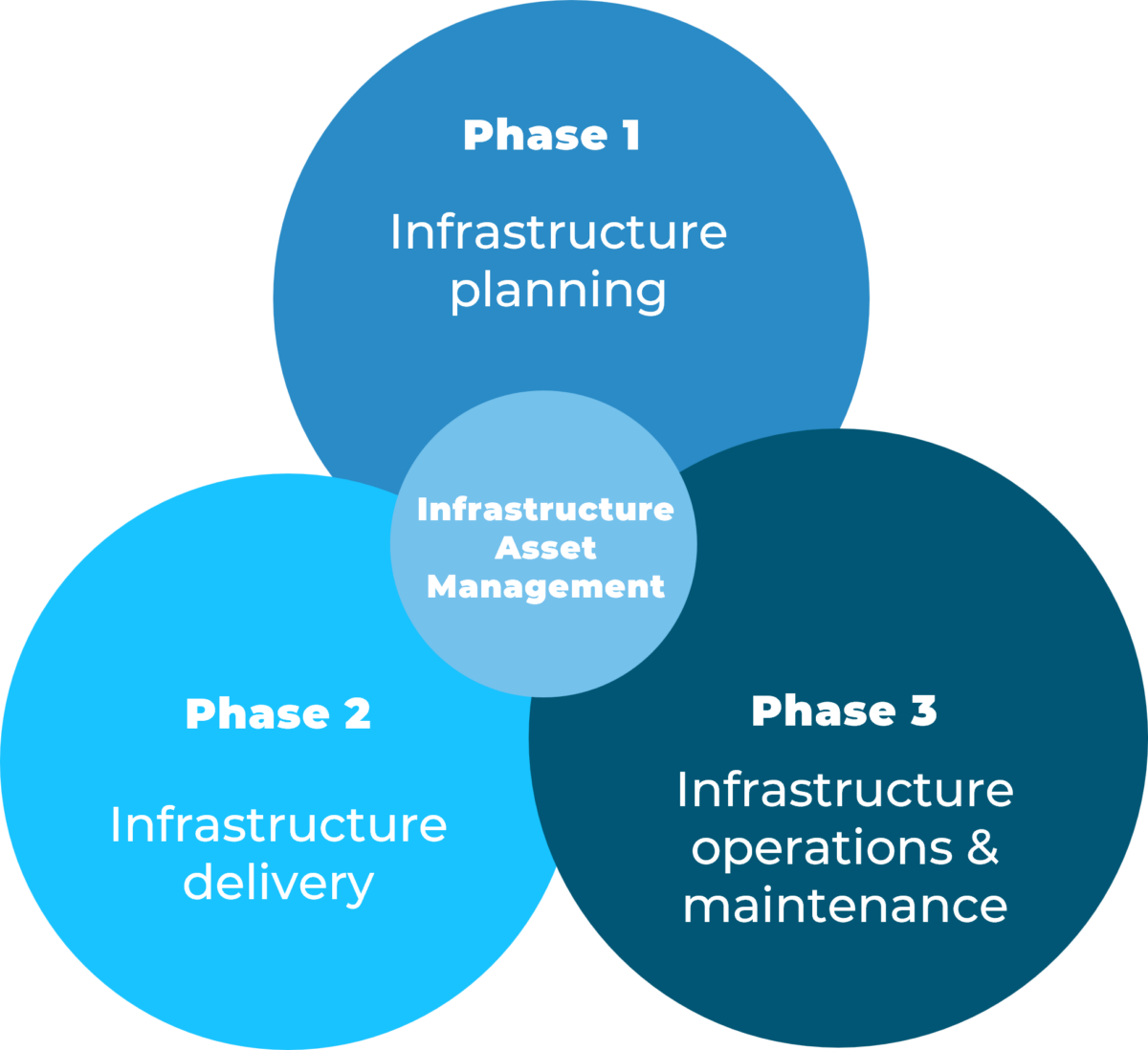
Financing Models
We propose a combination of public-private partnerships, government grants, and international funding from organizations focused on sustainable development. By demonstrating the potential cost savings and efficiency improvements, we aim to attract investment from both public and private sectors.
Future Prospects
The adoption of blockchain, IoT, and AI in the water and sanitation sector has the potential to significantly reduce corruption, improve service delivery, and increase access to clean water and sanitation. As these technologies become more widely adopted, they will enable more efficient use of resources and better maintenance of infrastructure, ultimately leading to better outcomes for communities.
Scalability
Our solution is adaptable to different regions and sectors. As we gather data and refine our processes, we will continue to expand and improve the system, ensuring that it remains effective in diverse environments.
- Scaling deep: Pilot implementation in selected regions, focusing on transparency in procurement and real-time monitoring of equipment.
- Scaling up: Expansion to more regions, integrating predictive analytics and AI to optimize operations.
- Scaling out: Full-scale deployment across and beyond the country, continuous monitoring, and optimization.
By leveraging technology, we aim to create a sustainable and transparent water and sanitation infrastructure that can serve as a model for other countries facing similar challenges.
Team Mfaso)

TEAM LEAD
Kwame Nkrumah University of Science and Technology
Master of Architecture
[Fourth semester]
My interests lie in Design Thinking / Innovation, Environmental Engineering and Sustainability.

Kwame Nkrumah University of Science and Technology
BSc. Computer Science
[Sixth semester]
My competencies lie within AI and Machine learning.

Kwame Nkrumah University of Science and Technology
Mphil. Computer Science
[Second semester]
My interests lie within AI, Machine Learning, UI and UX.
